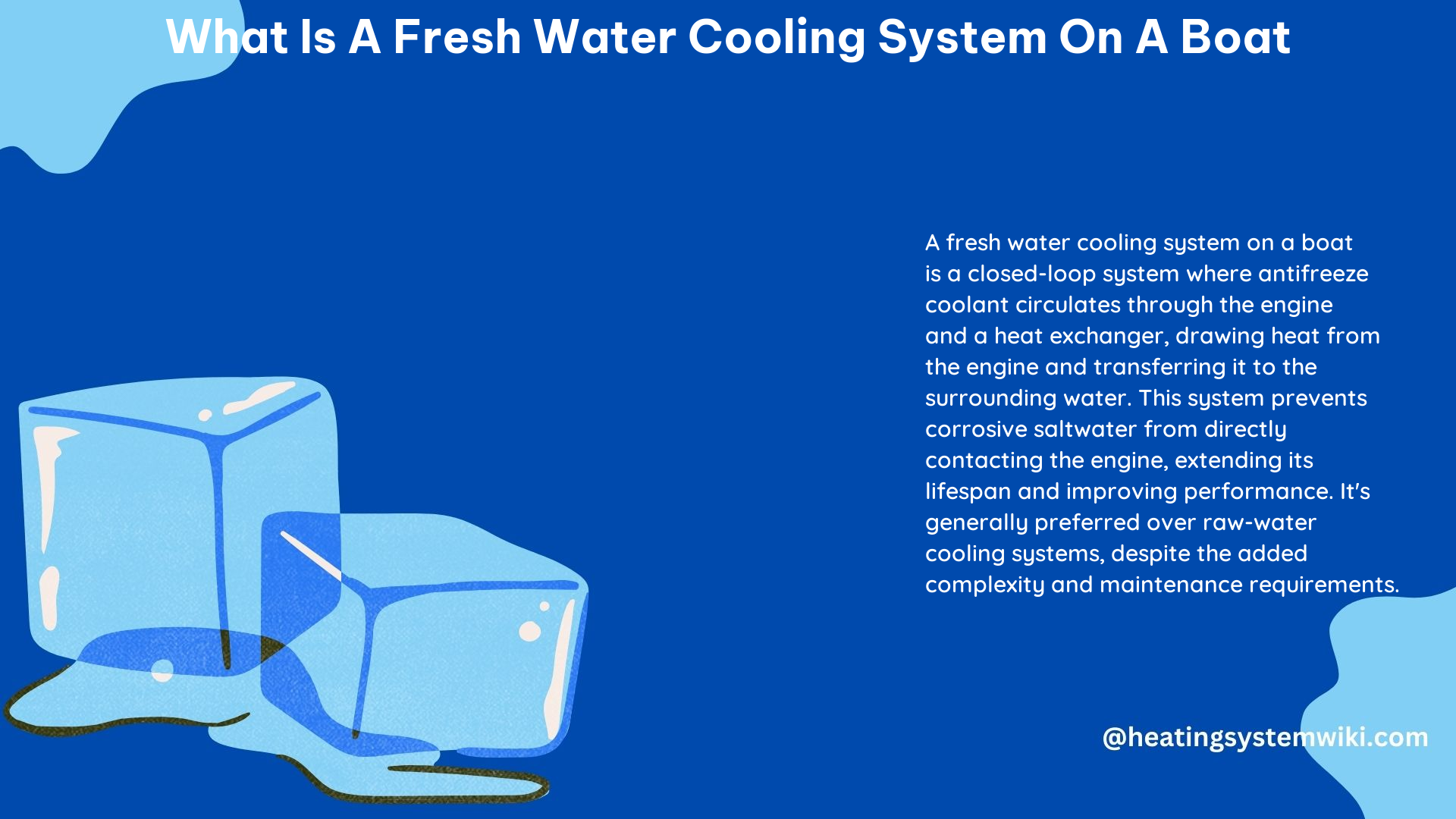A fresh water cooling system on a boat is a type of engine cooling system that uses a reservoir of fresh water to absorb and dissipate heat generated by the engine. This system is also known as a closed cooling system, as it is sealed and does not come into direct contact with the water the boat is floating in.
Key Components of a Fresh Water Cooling System
The fresh water cooling system consists of several key components, including:
-
Fresh Water Tank or Reservoir: This is the main storage unit for the fresh water used in the cooling system. The size of the tank can vary depending on the size of the boat and the engine, but it typically ranges from 5 to 50 gallons.
-
Heat Exchanger: The heat exchanger is the component where the heat from the engine is transferred to the raw water that is circulating around the outside of the exchanger. The heat exchanger is typically made of copper or brass and can be either a tube-and-shell or plate-and-frame design.
-
Water Pump: The water pump is responsible for circulating the fresh water through the engine block and heads, where it absorbs heat from the engine. The water pump is typically driven by the engine’s crankshaft and can be either a centrifugal or positive displacement design.
-
Thermostat: The thermostat is a temperature-sensitive valve that controls the flow of the fresh water through the cooling system. When the engine is cold, the thermostat restricts the flow of water to allow the engine to reach its optimal operating temperature. Once the engine reaches the desired temperature, the thermostat opens to allow the water to circulate more freely and dissipate the heat.
-
Hoses and Fittings: The fresh water cooling system also includes a network of hoses and fittings that connect the various components and allow the water to flow through the system.
How a Fresh Water Cooling System Works

The fresh water cooling system works as follows:
-
The water pump circulates the fresh water from the tank or reservoir through the engine block and heads, where it absorbs heat from the engine.
-
The heated water then flows through the heat exchanger, where the heat is transferred to the raw water that is circulating around the outside of the exchanger.
-
The cooled fresh water is then recirculated back through the engine to absorb more heat.
-
The thermostat controls the flow of the fresh water through the system, ensuring that the engine maintains its optimal operating temperature.
Advantages of a Fresh Water Cooling System
One of the main advantages of a fresh water cooling system is that it protects the engine from corrosion caused by saltwater. Saltwater is highly corrosive and can cause damage to the engine over time. By using fresh water as the cooling medium, the engine is protected from this corrosion.
Additionally, fresh water cooling systems are generally more efficient than raw water cooling systems, as they can maintain a more consistent cooling temperature. This is because the fresh water in the closed system is not exposed to the fluctuations in temperature and salinity that can occur in the surrounding body of water.
Disadvantages of a Fresh Water Cooling System
However, fresh water cooling systems do have some disadvantages:
-
Complexity: Fresh water cooling systems are more complex than raw water cooling systems, and therefore more expensive to install and maintain.
-
Space Requirements: Fresh water cooling systems require more space on the boat, as they require a separate fresh water tank or reservoir.
-
Freeze Damage: Fresh water cooling systems can be more susceptible to freeze damage in cold weather, as the water in the system can freeze and cause damage to the engine.
Choosing Between Fresh Water and Raw Water Cooling Systems
When it comes to choosing between a fresh water cooling system and a raw water cooling system, there are several factors to consider:
-
Cost: Fresh water cooling systems are generally more expensive to install and maintain than raw water cooling systems.
-
Corrosion Protection: If the boat will be operating in saltwater environments, a fresh water cooling system may be the better choice to protect the engine from corrosion.
-
Efficiency: Fresh water cooling systems are generally more efficient at maintaining a consistent engine temperature, which can improve engine performance and fuel efficiency.
-
Space Constraints: If space on the boat is limited, a raw water cooling system may be the better choice, as it requires less dedicated space for a separate fresh water tank or reservoir.
Ultimately, the decision will depend on the specific needs and requirements of the boat and its engine, as well as the operating environment and budget constraints.
